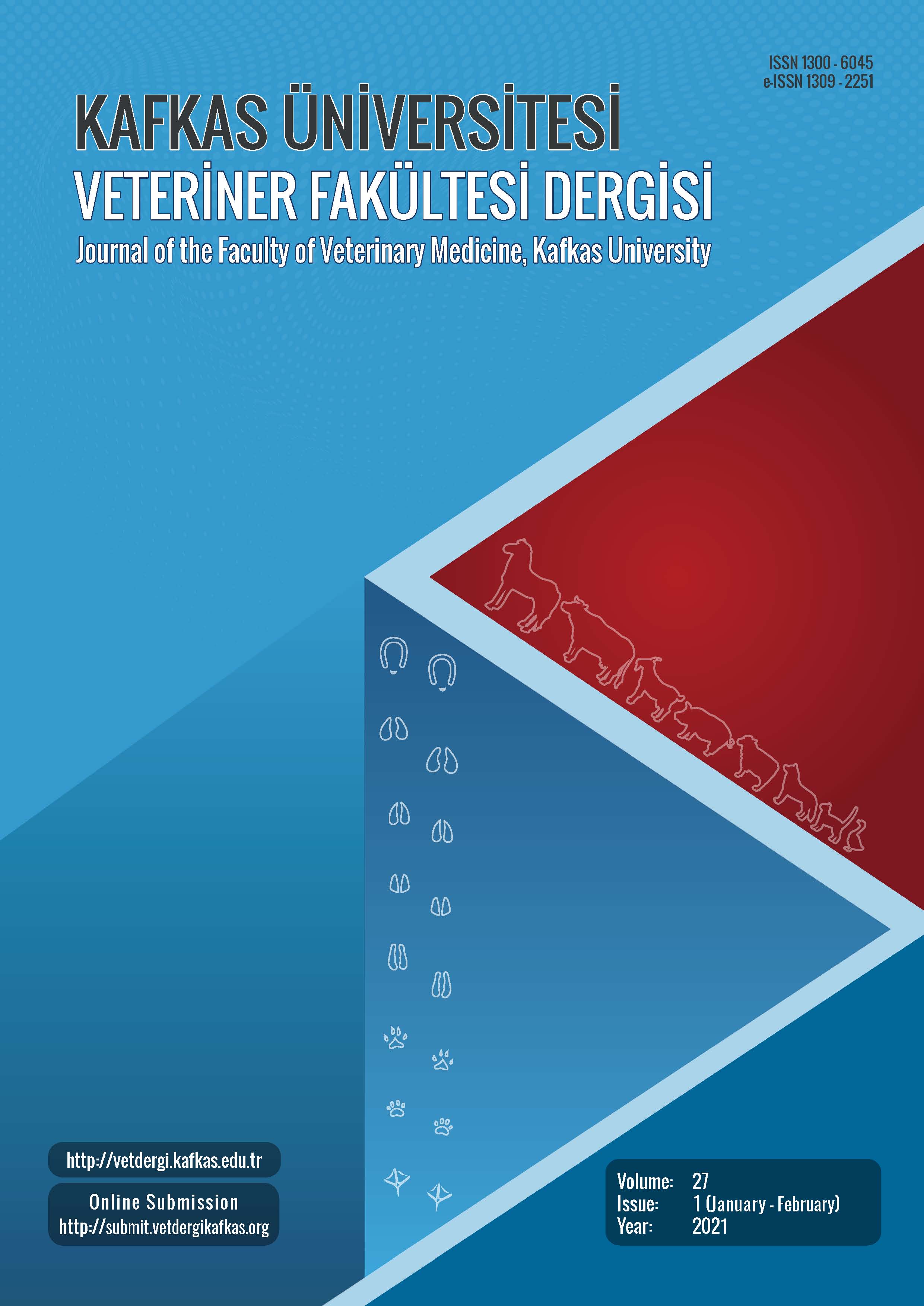
This journal is licensed under a Creative Commons Attribution-NonCommercial 4.0 International License
Kafkas Üniversitesi Veteriner Fakültesi Dergisi
2021 , Vol 27 , Issue 1
In Vitro Eff ect of Pelargonium sidoides on Promastigote Forms of Leishmania infantum and Leishmania tropica
1University of Kocaeli, Faculty of Medicine, Department of Microbiology, Kocaeli - TURKEY
DOI :
10.9775/kvfd.2020.24746
Leishmaniasis is recognized as a neglected disease by the World Health Organization (WHO). New treatment modalities are needed for the
treatment of leishmaniasis due to the limited number of drugs that can cause toxic side eff ects. Therefore, studies are being carried out on
herbal extracts, which can be potential candidates for the treatment. Pelargonium sidoides a perennial herb originating in Africa, is used to treat
infectious diseases. The aim of this study was to perform in vitro investigation of the direct eff ect of P. sidoides commercially available root extract
(EPs 7630) on promastigotes of Leishmania infantum and Leishmania tropica. For this purpose, L. infantum and L. tropica strains were grown on
NNN medium and then transferred into RPMI 1640 medium supported by 10% fetal bovine serum. After mass growing, the promastigotes were
placed into 96-well plates with L. infantum as 5x104 and L. tropica as 1.5x105. EPs 7630 was diluted at a concentration of 400, 200, 100 and 50
μg/mL. Afterwards, EPs 7630 was added and then counted by hemocytometry at 24, 48, 72, and 96 h. The calculations were done after the
experiments repeated three times. Comparison with the control group and liposomal amphotericin B showed that EPs 7630 had no inhibitory
eff ect on the growth of Leishmania promastigotes at the concentrations of 50 and 100 μg/mL, a partial inhibitory eff ect at 200 μg/mL, and an
inhibitory eff ect at 400 μg/mL. It was concluded that identifying the substance(s) responsible for the antileishmanial eff ect of P. sidoides extract,
conducting toxicity studies, and improving the results of these studies in in vivo models may be useful as steps for future clinical studies.
Keywords :
Pelargonium sidoides, Leishmaniasis, in vitro, Antileishmanial agent










